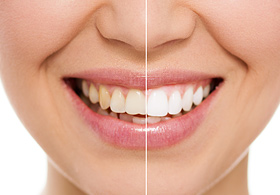Face Lift
Visible signs of aging in a person’s face are due to gravity, sun exposure and daily movement and stress caused by loss in skin elasticity and tissue strength, evident in the formation of deep creases between the nose and mouth and the jawline growing slack and the prevalence of ‘jowls’.
Technically known as ‘rhytidectomy’, a face lift removes excess fat, tightens underlying muscles and repositions facial and neck skin. It can be done alone or in conjunction with other procedures such as eyelid surgery, nose reshaping or a brow lift.
Face Facts
Ideal candidates for a face lift are men and women over the age of 40 with good bone structure but sagging skin or deep creases around the nose and mouth.
Risks and Complications
Although rare, surgical procedures can encounter complications. All surgery carries risk, and you must be aware of the associated risks with this procedure before consenting to surgery. Discuss these with your surgeon during consultation and be sure to ask questions. You’ll be expected to sign a pre-surgery consent form and your surgery will not go ahead if you do not sign.
Also remember that it is your obligation to inform your surgeon of vital medical information that could influence your surgery or increase the level of risk. Information that you should share and provide as much detail as possible about includes your medical history (family disease, medical complications, etc. as well as previous surgeries and current and recent medications).
No two patients are alike, with risk rates varying and depending on many factors. The risks listed below are possible with a face lift and are mentioned regardless of how remote the possibility:
- asymmetry or changes in hairline
- bleeding
- delayed healing
- excessive scarring
- infection
- injury to facial nerves and muscles
- loss of feeling (usually temporary but may also be permanent).
Face It
A face lift could be your answer if you look in the mirror and see the following:
- sagging skin around your jowls, forehead and generally all over your face
- a tired, even physically exhausted face, but you feel okay on the inside
- you’re starting to look ‘aged’ (rough, sallow and uneven skin with dark spots)
- you’re searching for a way to restore your appearance to its younger looking state
Full face lifts generally produce better results on a more mature face in need of extensive lifting, tightening or rejuvenation for a more youthful and alert appearance.
An endoscopic brow lift could be the solution if your only concern is a sagging forehead, eyebrows or slightly hooded eyes, although, younger patients are seeking mid and lower face lifts today.
For the record, there is no ‘usual age’ for a face lift, with patients ranging in age from as young as late 20s through to 80-year olds. You can discuss your available options with your surgeon to determine what is best for your individual case.
Your surgeon will discuss your goals while explaining what can be realistically achieved. It’s advisable to bring photos of yourself at an earlier age to determine your original facial features so the end result is natural. The majority of patients want to achieve a more ‘pulled together’ look – an attractive and slightly enhanced version of their younger selves, while some patients want to alter the structure of their face altogether. Depending on your needs, you may require a deep plane face lift (involving tightening of the inner muscular structure of the face).
Surgery
Your facial structure dictates where the surgeon will place inconspicuous incisions (usually above the hairline, at the temples, continuing in a natural line in front of the ear). Some surgeons still cut at the hairline, so be sure to check before your surgery. Some surgeons are very adept at making incisions in the ear cartilage and ending behind the earlobe and lower scalp.
If a neck lift is being performed in conjunction with a face lift, a small inconspicuous incision is made underneath the chin, removing excess fat by manual trimming or the more common technique of facial liposuction. The underlying muscle and fascia are then tightened and the skin is pulled back, trimmed and sutured into place. Sometimes surgeons opt for surgical staples in the scalp, placing a small drain behind your ears to capture excess fluid and blood.
Pre-Surgical Tests
Standard hospital procedure requires that your surgeon perform laboratory investigations and/or diagnostic examinations to ensure that you are fit for surgery, prior to hospital admission and surgery.
Time required: Approximately two to six hours, although it may take longer if you choose to have a neck lift. Note: surgeons promote general anaesthesia for any procedures amounting to three hours or more.
Anaesthesia: A face lift is most frequently performed using light sleep anaesthesia, with additional medications administered intravenously to induce a profound state of relaxation and sleep during the operation. Most patients have very little memory of the operation itself. Further drugs are administered to produce numbing of the surgical area, resulting in almost no recovery necessary from the anesthetics themselves, (unlike general anaesthesia) which can produce nausea after surgery. This method also carries less risk of complications. Please note, general anaesthesia can be used if preferred.
Note: This information acts as a guide to your possible treatment. Your individual concerns and specific medical history will need to be shared and discussed with your surgeon during your initial consultation.














